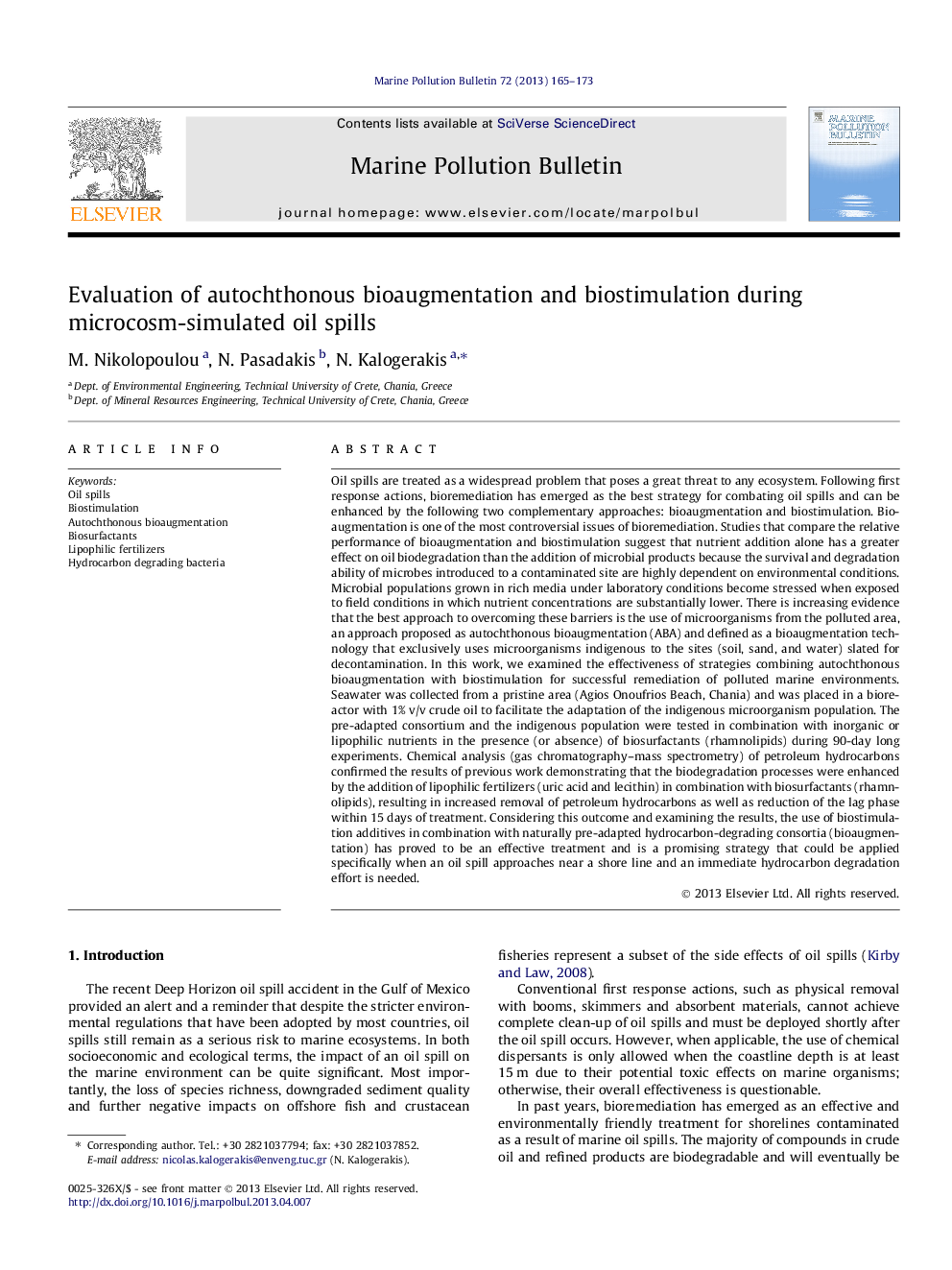| کد مقاله | کد نشریه | سال انتشار | مقاله انگلیسی | نسخه تمام متن |
|---|---|---|---|---|
| 6359804 | 1315643 | 2013 | 9 صفحه PDF | دانلود رایگان |
عنوان انگلیسی مقاله ISI
Evaluation of autochthonous bioaugmentation and biostimulation during microcosm-simulated oil spills
ترجمه فارسی عنوان
ارزیابی زیستشناختی اتوماتیک و بیوسیمولاسیون در جریان نشت نفتی شبیه سازی شده با میکروسکوپ
دانلود مقاله + سفارش ترجمه
دانلود مقاله ISI انگلیسی
رایگان برای ایرانیان
کلمات کلیدی
موضوعات مرتبط
مهندسی و علوم پایه
علوم زمین و سیارات
اقیانوس شناسی
چکیده انگلیسی
Oil spills are treated as a widespread problem that poses a great threat to any ecosystem. Following first response actions, bioremediation has emerged as the best strategy for combating oil spills and can be enhanced by the following two complementary approaches: bioaugmentation and biostimulation. Bioaugmentation is one of the most controversial issues of bioremediation. Studies that compare the relative performance of bioaugmentation and biostimulation suggest that nutrient addition alone has a greater effect on oil biodegradation than the addition of microbial products because the survival and degradation ability of microbes introduced to a contaminated site are highly dependent on environmental conditions. Microbial populations grown in rich media under laboratory conditions become stressed when exposed to field conditions in which nutrient concentrations are substantially lower. There is increasing evidence that the best approach to overcoming these barriers is the use of microorganisms from the polluted area, an approach proposed as autochthonous bioaugmentation (ABA) and defined as a bioaugmentation technology that exclusively uses microorganisms indigenous to the sites (soil, sand, and water) slated for decontamination. In this work, we examined the effectiveness of strategies combining autochthonous bioaugmentation with biostimulation for successful remediation of polluted marine environments. Seawater was collected from a pristine area (Agios Onoufrios Beach, Chania) and was placed in a bioreactor with 1% v/v crude oil to facilitate the adaptation of the indigenous microorganism population. The pre-adapted consortium and the indigenous population were tested in combination with inorganic or lipophilic nutrients in the presence (or absence) of biosurfactants (rhamnolipids) during 90-day long experiments. Chemical analysis (gas chromatography-mass spectrometry) of petroleum hydrocarbons confirmed the results of previous work demonstrating that the biodegradation processes were enhanced by the addition of lipophilic fertilizers (uric acid and lecithin) in combination with biosurfactants (rhamnolipids), resulting in increased removal of petroleum hydrocarbons as well as reduction of the lag phase within 15Â days of treatment. Considering this outcome and examining the results, the use of biostimulation additives in combination with naturally pre-adapted hydrocarbon-degrading consortia (bioaugmentation) has proved to be an effective treatment and is a promising strategy that could be applied specifically when an oil spill approaches near a shore line and an immediate hydrocarbon degradation effort is needed.
ناشر
Database: Elsevier - ScienceDirect (ساینس دایرکت)
Journal: Marine Pollution Bulletin - Volume 72, Issue 1, 15 July 2013, Pages 165-173
Journal: Marine Pollution Bulletin - Volume 72, Issue 1, 15 July 2013, Pages 165-173
نویسندگان
M. Nikolopoulou, N. Pasadakis, N. Kalogerakis,
